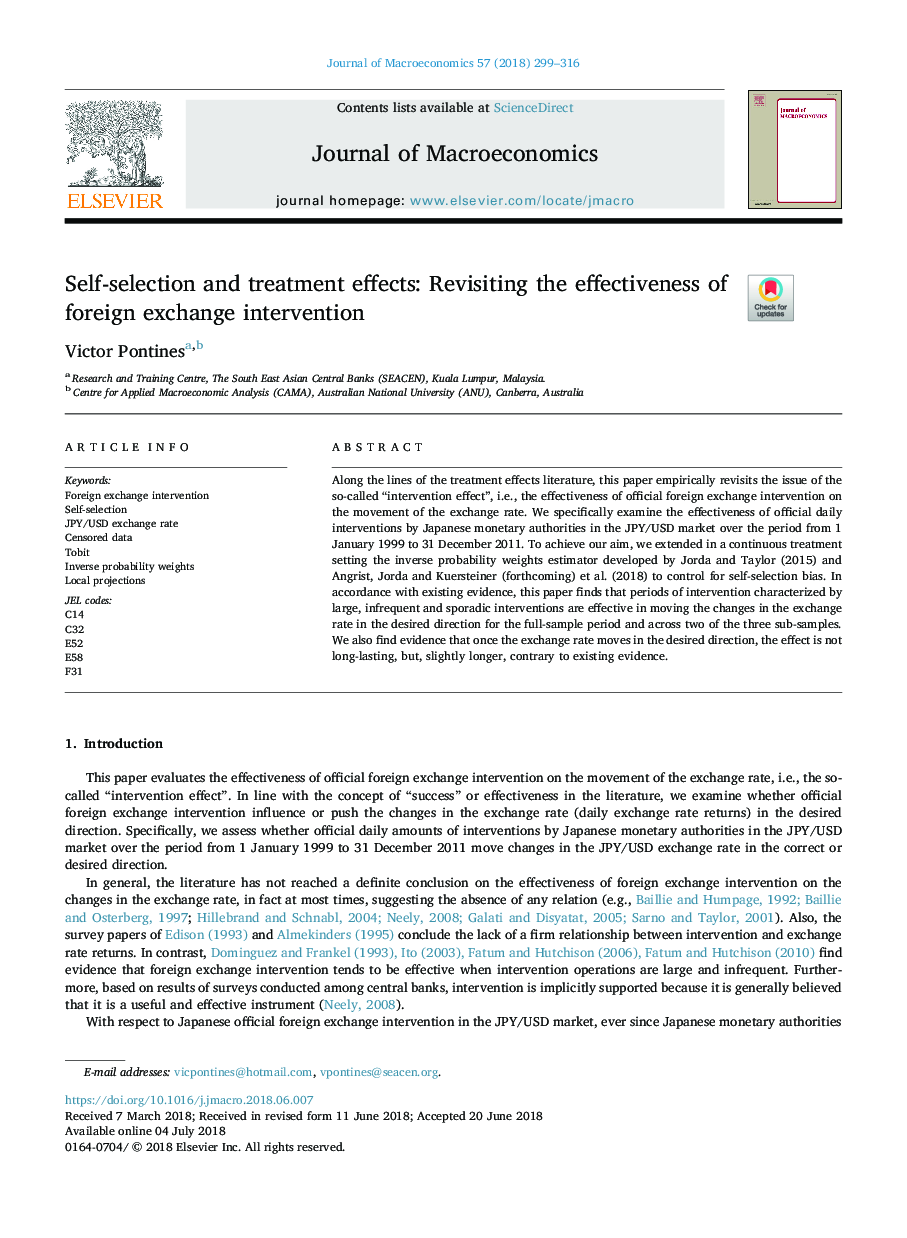| Article ID | Journal | Published Year | Pages | File Type |
|---|---|---|---|---|
| 7366632 | Journal of Macroeconomics | 2018 | 18 Pages |
Abstract
Along the lines of the treatment effects literature, this paper empirically revisits the issue of the so-called “intervention effect”, i.e., the effectiveness of official foreign exchange intervention on the movement of the exchange rate. We specifically examine the effectiveness of official daily interventions by Japanese monetary authorities in the JPY/USD market over the period from 1 January 1999 to 31 December 2011. To achieve our aim, we extended in a continuous treatment setting the inverse probability weights estimator developed by Jorda and Taylor (2015) and Angrist, Jorda and Kuersteiner (forthcoming) et al. (2018) to control for self-selection bias. In accordance with existing evidence, this paper finds that periods of intervention characterized by large, infrequent and sporadic interventions are effective in moving the changes in the exchange rate in the desired direction for the full-sample period and across two of the three sub-samples. We also find evidence that once the exchange rate moves in the desired direction, the effect is not long-lasting, but, slightly longer, contrary to existing evidence.
Keywords
Related Topics
Social Sciences and Humanities
Economics, Econometrics and Finance
Economics and Econometrics
Authors
Victor Pontines,
